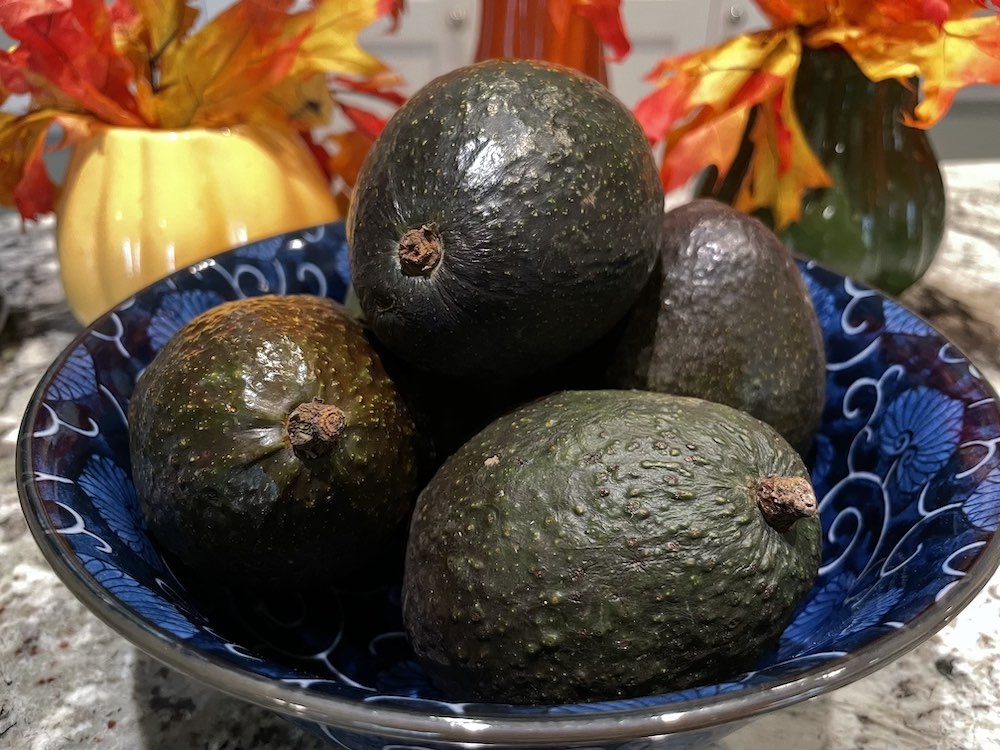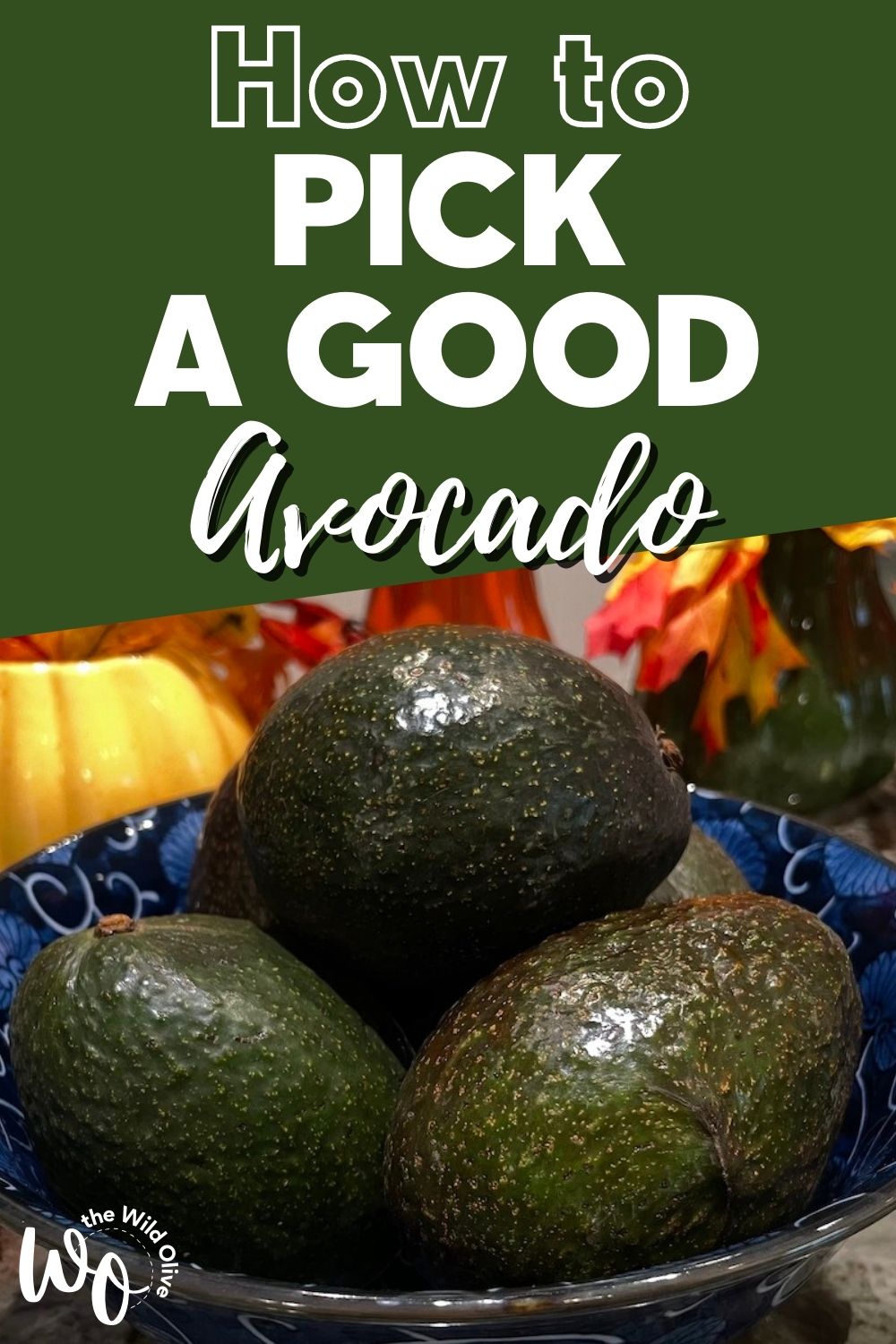How to Pick a Good Avocado – and Keep it Fresh

Every home cook needs to know how to pick a good avocado. After all, who doesn’t love guacamole or a delicious slab of avocado toast? Fortunately, it’s not rocket science. All you need are a few simple tips and tricks to guarantee you come home with the creamiest, freshest avocados.
To Pick a Good Avocado, Start by Choosing the Right Variety
There are several varieties of avocado, but the only ones you want to bring home are Haas. You can tell Haas avocados by their thick, pebbly skin. They are usually about the size of your fist. Occasionally you will see what are known as Florida Avocados. These are much larger, almost the size of a mango, and they have smooth, bright green skin. Florida avocados contain much less fat than Haas, and therefore lack that wonderful creaminess. That lack of fat also means they taste milder and have a different texture. I don’t care for them, the same way I don’t care for low-cal ice cream. Haagen Dazs all the way for me. The fat in Haas-type avocados is very healthful, so don’t shy away from them because of the fat.
What to Look for in a Good Avocado
The first thing to look for when picking a good avocado is to make sure it still has a bit of stem. Notice the little stem nibs in the picture above? That’s what you want to see. Rather like cherries which are always harvested with the stems on to preserve freshness, an avocado with its stem intact will be fresher. If the stem is removed it’s a pathway for moisture to get out and bacteria to get in. If at all possible, choose an avocado with its stem intact.
The second thing you want to look for is heft. Pick up a few avocados of the same size and choose the ones that are heaviest. A heavier avocado is a creamier avocado.
The third thing to look for is where your avocado is from. Haas Avocados from California and Mexico are best. I find that avocados from Peru, even Haas avocados, just aren’t that good. They never seem to ripen properly. The outside gets overripe while the parts around the pit stay hard and waxy. If the tags say they are from Peru, I just pass them up.
The fourth thing to look for is the condition of the skin. Make sure there are no knicks or bruises. A few wrinkles or knots are fine (see the image below).

Now that you know how to pick a good avocado, you’ll want some storage tips, and I’ve got ’em!
How to Store Avocados
Once you get your perfect avocados home, store them on the counter until they are almost ripe. The skin will darken and the flesh will give a bit when gently squeezed. If you buy avocados by the sack like I do, you need a way to store them so you don’t end up with 5 avocados that need to be eaten at once.
The easiest way to store avocados so they stay fresh for days – at least a week – is to refrigerate them. It’s a myth that you shouldn’t refrigerate avocados. They do just fine in the fridge. In fact, they will even continue to ripen in the fridge.
The best way to store avocados in the fridge is in a Rubbermaid Freshworks produce box. These things are magic. Not only will they keep your avocados perfect for at least a week, but they are also amazing for keeping notoriously fragile produce like greens and berries fresh.
When my avocados are about a day short of ripe I pop them in one of my Freshworks boxes. They slowly continue to ripen and hold till I’m ready to use one on a salad or the hubs “needs” some guac for his lunch nachos.
How to Keep a Cut Avocado From Browning
There are a lot of expensive contraptions out there to keep a cut avocado from browning. You don’t need to waste $ or drawer space on any of them. All you need is some form of acid. You can squeeze some lime or lemon juice over the cut surfaces, or use my favorite option – citric acid.
Citric acid is a naturally occurring acid in citrus fruits (hence the name!). It looks like fine table salt and is sold in Middle Eastern markets, in big box stores by the canning supplies, or on Amazon. It’s super versatile for perking up salad dressings, cocktails, or anything that needs a pop of acid. I like using it more than vinegar because it has a clean, pleasant taste.
On the rare occasion when I find myself with leftover avocado, I sprinkle a bit of citric acid on the cut surface (leave the skin on). Then I use a wet finger to rub it in a bit and place the avocado half, cut side down, on a plate in the fridge. It will be good to go for the next day’s avocado toast or salads.
I hope you’ve found these tips helpful! And now that you know how to pick a good avocado, check out these other kitchen tips…
Peace,

